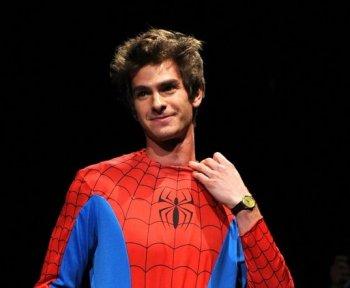NEW YORK—New Tang Dynasty Television’s second International Chinese Classical Dance Competition came to a grand finale on Sunday, August 24, at The Town Hall in Manhattan, New York.
The final concludes a month long process of selecting competitors to choose the world’s best classical Chinese dancers. One set of preliminaries were held in Taiwan in mid-July, while a second preliminary round was held in New York on Aug. 22. Forty-one dancers were chosen for the semifinals on Aug. 23, and thirty were selected for the finals held on Sunday, Aug. 24.
“Chinese classical dance is a tradition passed down by history through dynasties. It is a gift inborn in every Chinese person that came down from different dynasty and culture. The dance is passed along with a special characteristic known as the unique Chinese style,” said Vina Lee of the competition.
According to the audience members, the quality of the dancers was markedly different from that of the previous year.
“There were more competitors and dancers than last year. In general, the skill level is higher too. The dancers were able to demonstrate more skill in the competition than in a real performance,” said Ms. Susan Sun, a research scientist, who watched the competition finals.
It wasn’t just the dancing—the costumes, the music and even the stories portrayed—all had deep inner meaning. Dancers chose themes inspired by stories from ancient Chinese culture.
“The dancers were more calm and pretty confident; their performances were very smooth. The impact was much better. Last year, a lot of contestants didn’t really know what Chinese traditional dance was, so we saw a lot of martial arts and opera,” said Wei Huang, a school teacher, who added that the competition this year featured more traditional Chinese dance techniques.
The variety in the classical Chinese dance themes ranged from young monks to honorable generals such as Yue Fei, a national hero from ancient China. Some of the dances also showcased serious themes with gravitas, with pieces such as “Assassin of Emperor Qin” and “River Runs Red” in the young male division.
The final concludes a month long process of selecting competitors to choose the world’s best classical Chinese dancers. One set of preliminaries were held in Taiwan in mid-July, while a second preliminary round was held in New York on Aug. 22. Forty-one dancers were chosen for the semifinals on Aug. 23, and thirty were selected for the finals held on Sunday, Aug. 24.
“Chinese classical dance is a tradition passed down by history through dynasties. It is a gift inborn in every Chinese person that came down from different dynasty and culture. The dance is passed along with a special characteristic known as the unique Chinese style,” said Vina Lee of the competition.
According to the audience members, the quality of the dancers was markedly different from that of the previous year.
“There were more competitors and dancers than last year. In general, the skill level is higher too. The dancers were able to demonstrate more skill in the competition than in a real performance,” said Ms. Susan Sun, a research scientist, who watched the competition finals.
It wasn’t just the dancing—the costumes, the music and even the stories portrayed—all had deep inner meaning. Dancers chose themes inspired by stories from ancient Chinese culture.
“The dancers were more calm and pretty confident; their performances were very smooth. The impact was much better. Last year, a lot of contestants didn’t really know what Chinese traditional dance was, so we saw a lot of martial arts and opera,” said Wei Huang, a school teacher, who added that the competition this year featured more traditional Chinese dance techniques.
The variety in the classical Chinese dance themes ranged from young monks to honorable generals such as Yue Fei, a national hero from ancient China. Some of the dances also showcased serious themes with gravitas, with pieces such as “Assassin of Emperor Qin” and “River Runs Red” in the young male division.




